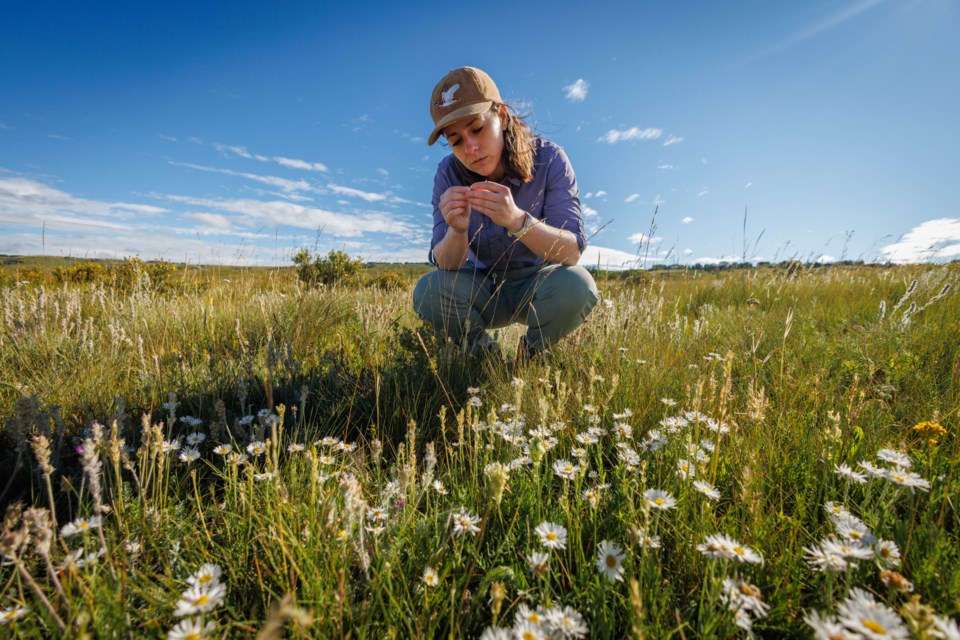For PhD student Jenna Leblanc, the fields of Glenbow Ranch Provincial Park make for a compelling classroom.
Leblanc grew up in Calgary and worked a summer job at Glenbow Ranch Park Foundation in 2017 and 2018. Now she is bringing her love of grasslands and Glenbow Ranch Provincial Park together as she pursues her PhD.
This summer, Leblanc is conducting research for the second year, on these important climax species in Alberta’s native prairies, working towards her PhD from York University. She can often be seen wandering the park, peering down at rough fescue grasses (Festuca campestris and Festuca hallii).
She chose the sprawling rovincial park located southeast of Cochrane because she had ties there from her previous summer work, and because the site offers a unique opportunity to study grasses and the fungi.
“These are what we call climax species. They’re a foundational part of the ecosystem. I’m interested in the little fungi that live in the ecosystem, called endophytes,” she said.
Endophytes live in a symbiotic relationship with the grass. The grasses protect and provide nutrients to the fungi, and in return, the fungi allow the grasses to grow faster, resist drought, and resist grazing.
The fungi help the grass resist grazing by way of natural repellents, according to Leblanc.
“They actually provide chemical protection. So, when grazing pressure is increased, the fungi produce toxins called alkaloids. They make the grass distasteful and actually toxic if eaten in too high a quantity,” she explained.
A lot of research has been done on endophytes in Europe and the United States but very little in native grasslands in western Canada. Leblanc’s work will help fill that gap.
The rough fescues she’s studying can be found from western Ontario to eastern B.C., but the former Alberta Parks Vegetation Assistant (a position she called “a glorified weed whacker”) wanted to work at Glenbow Ranch.
It’s like home to her.
“I really love it out there,” she said.
The two species she’s focusing on are found in other places but in Cochrane they grow together, which is unique.
“The cool thing about Glenbow specifically is it’s where a lot of the different natural eco-regions of Alberta come together,” she said.
She compares her chosen species to the Redwoods in old-growth forests.
“They are the climax species,” she said. “So the Redwoods are sort of the main structural components, and the rough fescues are that – the old, final stage.
“The other term is they’re the foundational species – they form the foundation of that ecosystem.”
Leblanc said these grasses are important because they’re old, and scientists are still learning about how they function.
She hopes her work sheds some light on how important and interesting the native fescues are, and that the public takes notice.
“The more you look into them the more you realize, kind of like the old growth forests with the Redwoods, these are like old-growth grasslands,” she said.
“Some of these grasses might be up to a hundred, sometimes up to even 1,000 years old. They’re very ancient, and we don’t know a lot about them.”
Grasslands are one of the most ecologically diverse systems in the world. They reduce soil erosion, mitigating the effects of floods, and are carbon-storing machines – grasslands store up to 30 per cent of the world’s carbon in the plants and their soil.




